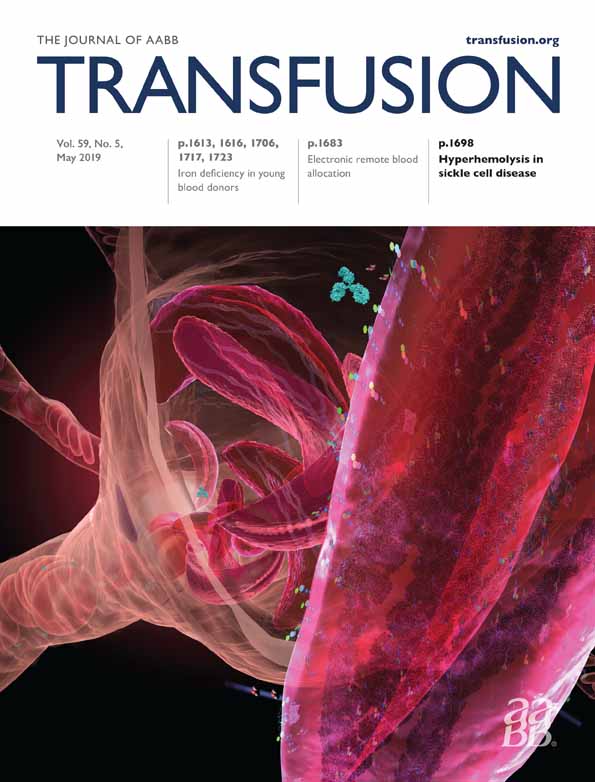An in vitro pilot study of apheresis platelets collected on Trima Accel system and stored in T-PAS+ solution at refrigeration temperature (1-6°C)
Abstract
BACKGROUND
Using platelet additive solution (PAS) to dilute fibrinogen during long-term cold storage of platelets (PLTs) decreases PLT activation and increases functional PLT shelf life. We performed a randomized, paired study to assess the in vitro quality of PLTs stored in the cold in T-PAS+ for up to 18 days evaluated against PLTs stored under currently allowable conditions (5-day room temperature–stored PLTs [RTP] and 3-day cold-stored PLTs [CSP]).
STUDY DESIGN AND METHODS
PLTs were collected from healthy volunteers (n = 10) and diluted to 65% T-PAS+/35% plasma before cold storage. Double-dose apheresis PLTs (in 100% plasma) were collected from the same donors and split into two bags (one bag RTP, one bag CSP). All bags were sampled on the day of collection (Day 0). CSP and RTP bags were sampled on Days 3 and 5, respectively. T-PAS+ samples were assessed on Days 3, 5, 14, 16, and 18 of storage for metabolism, hemostatic function, and activation.
RESULTS
After 18 days of storage in T-PAS+, pH was 6.71 ± 0.04, PLT count was comparable to Day 3 CSP, PLT function (aggregation and clot strength) was comparable to Day 5 RTP, and PLT activation was significantly increased.
CONCLUSION
Refrigerated PLTs stored in T-PAS+ for 18 days met FDA pH standards. Functional metrics suggest activity of T-PAS+-stored PLTs and the potential to contribute to hemostasis throughout 18 days of storage. Extending the shelf life of PLTs would increase access to hemostatic resuscitation for bleeding patients in military and civilian settings.
CONFLICT OF INTEREST
The authors have disclosed no conflicts of interest.




